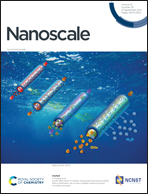Synergistic effects of Co/CoO nanoparticles on imine-based covalent organic frameworks for enhanced OER performance†
Abstract
The development of non-noble metal electrocatalysts toward the oxygen evolution reaction (OER) is a key challenge in advancing electrocatalytic water splitting, which is essential for the commercialization of clean and renewable energy. A covalent organic framework (COF) has a precise and controllable structure, high π–π conjugation, large surface area, and porosity and shows great potential as an OER electrocatalyst. However, the relative conductivity and inherent instability greatly limit the further improvement of its performance. Herein, imine-based COF-supported Co/CoO nanoparticles (Co/CoO@COF) were developed for the high-performance electrocatalytic OER. For the Co/CoO@COF catalyst, Co/CoO could form a conjugation effect with the COF, which can increase the electron cloud density of the delocalized large π bond, then improve the conductivity. The combination of Co/CoO and COF effectively enhances the structural stability of the catalyst and enriches the catalytic active sites. Under alkaline conditions, the Co/CoO@COF shows a very low overpotential of 278 mV at a current density of 10 mA cm−2, and a Tafel slope of 80.11 mV dec−1 which is better than that of commercial RuO2.



 Please wait while we load your content...
Please wait while we load your content...